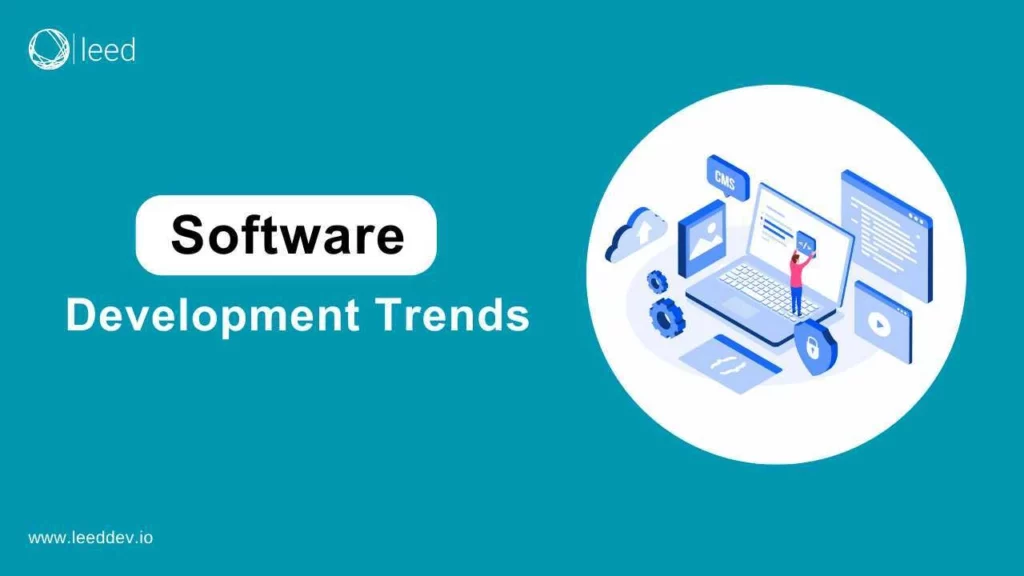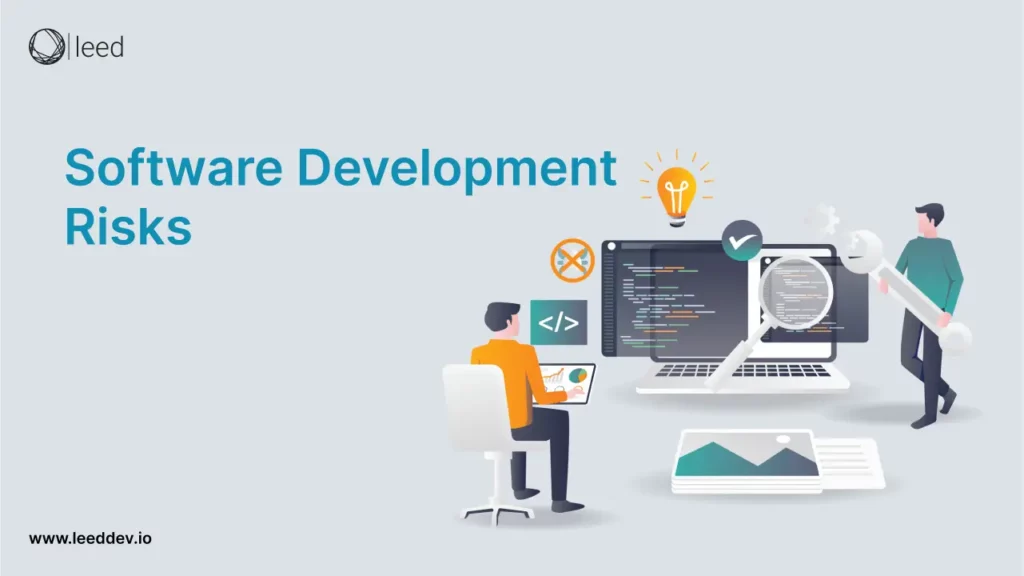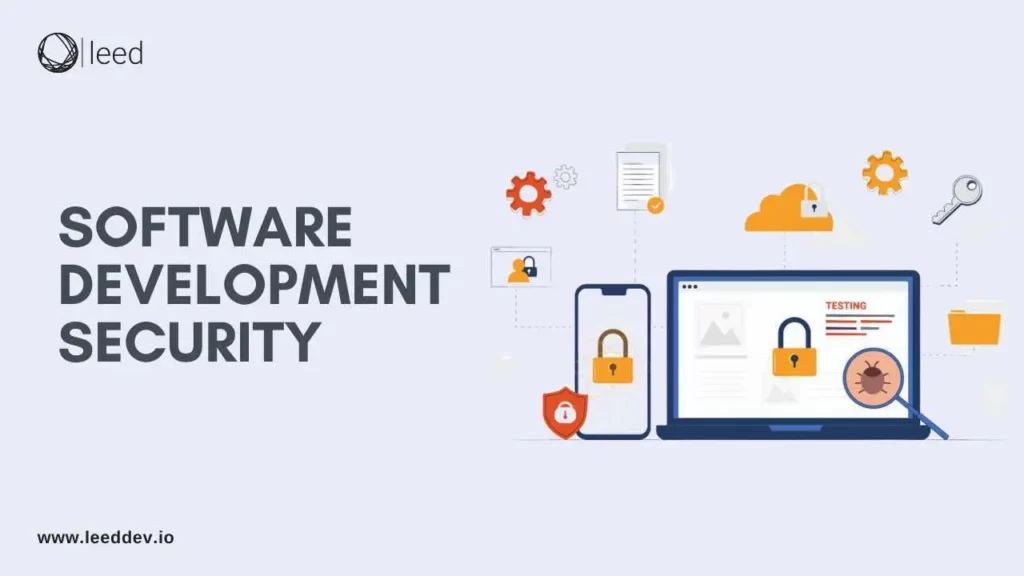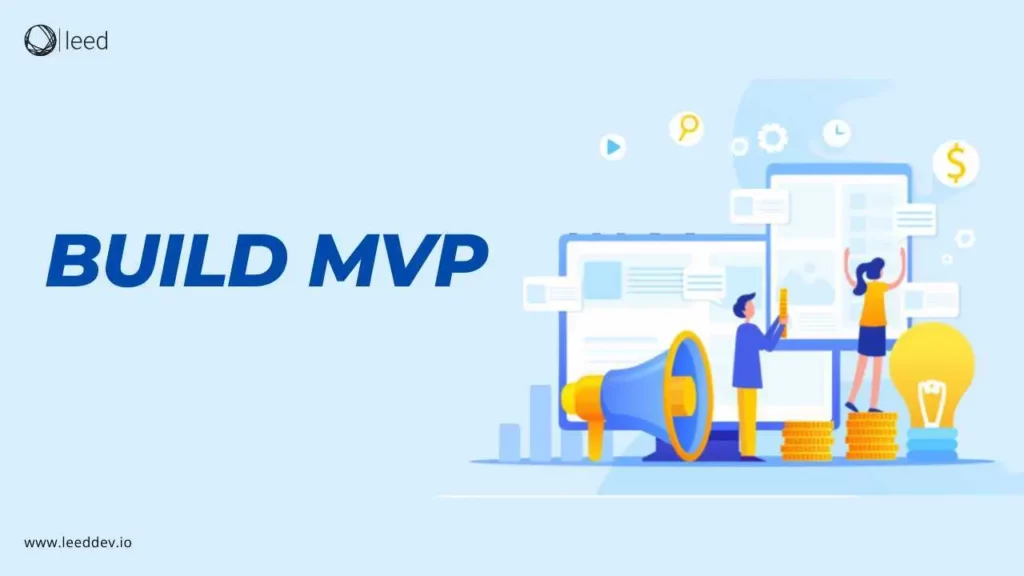Software development is changing fast, and staying on top of the latest trends is important to keep up. Did you know 70% of businesses say new technology helps them stay competitive? From artificial intelligence (AI) to cloud computing, the way we create and use software is changing.
These changes bring new opportunities for businesses to improve how they work. To stay on top, it’s important to understand these trends and how they can help you succeed. Let’s take a look at the latest trends in software development.
Top Software Development Trends in 2025
Here is the list of the top 13 software development trends that are reshaping the future of software development. So let’s explore each in a detailed way.
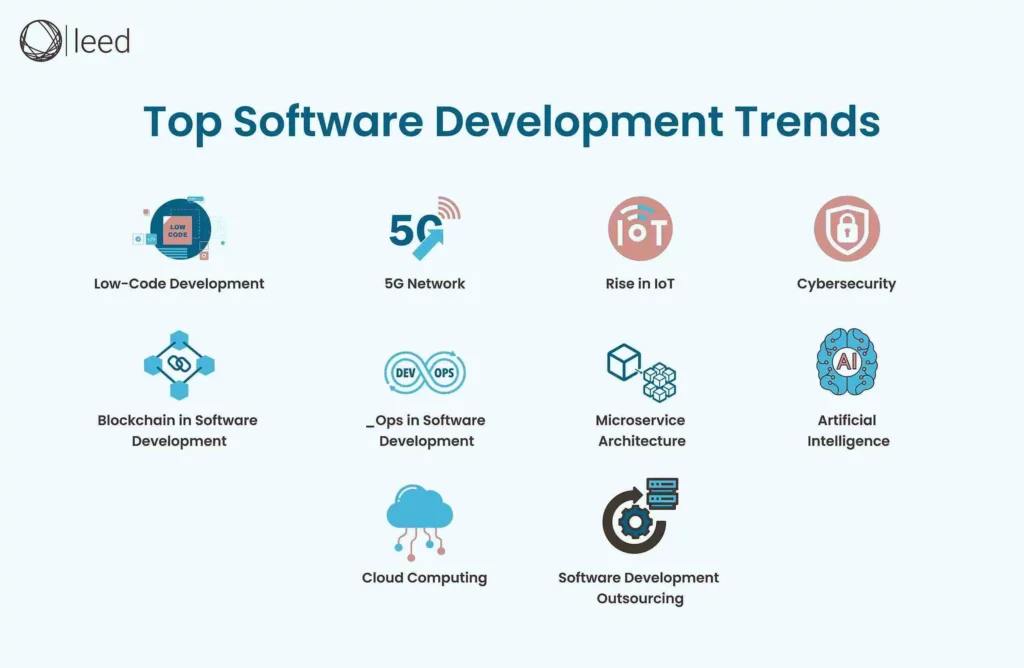
1. Progressive Web Apps (PWAs) are Changing the Digital World
Progressive Web Apps (PWAs) were introduced in 2015, and are becoming more popular. According to Emergen Research, the global PWA market could reach USD 10.44 billion by 2027. These apps are a simple, cost-effective way for businesses to offer mobile-friendly, app-like experiences.
PWAs combine the best features of websites and apps:
- Fast Loading: PWAs load quickly and work offline by saving data on your device.
- Takes Less Space: Twitter’s PWA, for example, uses only 3% of the storage space compared to its Android app.
- Works Everywhere: PWAs run on phones, tablets, and computers without needing different versions.
- Easy to Use: Users don’t need to download them from an app store. You can save them directly to your home screen.
- Lower Costs: PWAs are up to 15 times cheaper to develop than regular apps.
- Faster to Build: They are quicker to design and launch.
Many big brands have seen great results with PWAs:
- Pinterest: After creating a PWA, user engagement went up by 40%, and ad revenue grew by 44%.
- Starbucks: Their PWA is 99.84% smaller than their iOS app and has doubled daily web orders. Users can check menus & customize orders offline and place orders when back online.
PWAs offer the simplicity of a website with the features of an app. They’re perfect for businesses that want to improve user experiences while keeping costs low.
2. 5G Network
The 5G network is set to be one of the biggest technology trends of 2025. It’s faster, more reliable, and able to handle more devices than ever. Businesses and developers can unlock exciting opportunities with it.
Here is how 5G is better than 4G
- 5G makes downloads and uploads super quick, perfect for gaming and streaming.
- It can support more devices at once, even in busy areas.
- 5G reduces lag, which is important for real-time uses like virtual reality (VR) and augmented reality (AR).
Here’s what 5G can do for you in 2025
- Supports IoT and AI: By 2025, there could be over 75 billion IoT devices worldwide. 5G helps them work better by transferring data faster with minimal delays, enabling smarter AI.
- Boosts Cloud and Edge Computing: Faster networks mean data can be processed closer to users, making things like gaming, AR, and VR smoother.
- Handles More Data: By 2028, mobile data use is expected to triple compared to 2022. 5G can handle this surge, helping developers create advanced, data-heavy apps.
For developers, 5G opens many possibilities. They can create apps that use AR, AI, and IoT more effectively. Faster networks mean apps will be more responsive and enjoyable to use. Optimizing apps for 5G will also help them stay competitive in the changing tech world.
Apps should be designed for higher speeds and data use. Developers should also explore new ways to use 5G’s power for innovative solutions. Now is the time to prepare for 5G and take advantage of what it offers.
Start building for the future with 5G today!
3. The Growing Popularity of IoT
The Internet of Things (IoT) is changing the way we live and work. It connects devices to share data and automate tasks. From smart homes to factories, IoT combines the physical and digital worlds. By 2025, there will be 65 billion IoT devices, six times more than in 2018.
IoT is growing fast because devices are becoming cheaper. Technologies like 5G, AI, and Machine Learning (ML) make it work better. IoT now helps businesses process large amounts of data quickly. This saves time and improves results.
Here are some IoT trends that you will watch in 2025
- Smart Cities: Cities use IoT to reduce traffic and improve safety. It makes urban life easier and more efficient.
- Healthcare Devices: Wearables and sensors help patients track their health. Doctors can use the data for better treatment.
- Digital Twins: These virtual models copy real-world objects. They help improve performance and save costs.
- Better Security: With more devices, cyberattacks are a risk. Companies now use blockchain to keep data safe.
IoT is everywhere. Bayer uses IoT chips to track items like seeds during shipping. Farmers use IoT to grow food more efficiently. Cars now have IoT to improve connectivity and safety.
By 2025, the market could be worth $35.5 billion. Businesses also use IoT to improve workplace safety and operations. With the IoT market growing, now is the time to start using IoT and stay ahead in the market.
4. The Growth of Low-Code Development
Building software can be slow and costly. Low-code development is changing that by making it faster and easier to create apps with minimal coding. This approach allows developers to quickly bring ideas to life without requiring a big budget.
What is Low-Code Development?
Low-code development uses platforms with built-in tools to simplify app creation. These platforms reduce the need for advanced coding skills and allow developers to work faster. No-code platforms take it further, letting users build apps by dragging and dropping components without any coding knowledge. Both methods are gaining popularity, with searches for
- “low-code” up 286%
- “no-code” up 950% in the past five years
Traditional coding is often time-consuming, expensive, and prone to challenges. Research shows that 20% of software projects fail, and over half face major difficulties. Low-code offers a solution by making development quicker and more efficient. KPMG reports that all companies using low-code platforms have seen a positive return on investment (ROI), and many now view it as a top priority for automation.
Here are some common uses of low-code platforms:
- Customizing SaaS Software: Add features to meet specific business needs.
- Replacing Spreadsheets: Move from manual spreadsheets to modern, web-hosted databases.
- Modernizing Old Apps: Update legacy systems to improve performance and extend their lifespan.
- Building Complex Apps Quickly: Create applications with features like data visualization and business intelligence.
- Developing New Apps: Design web and mobile apps from scratch in less time.
Top Low-Code and No-Code Platforms
- Appian
- Mendix
- Microsoft Power Apps
- Zoho Creator
- Visual LANSA
- Bubble: A no-code tool for building web apps, with $106M in funding.
- Adalo: Another no-code platform, backed by $8M in funding.
Low-code development is set to grow rapidly. Gartner predicts that over half of medium to large businesses will use low-code platforms by 2023. These tools simplify the development process, making it easier for businesses to innovate and adapt.
5. The Growing Importance of Cybersecurity in 2025
Cyber threats are rising, with global cybercrime costs expected to hit $10.5 trillion annually by 2025, up from $3 trillion in 2015. The shift to remote work and cloud solutions has increased cyber security weaknesses.
Key Cybersecurity Measures
- Zero Trust Architecture: Requires strict verification for network access, advocated by Google and Microsoft.
- DevSecOps: Integrates security into software development to reduce risks early.
- AI and ML Tools: Detect threats faster by analyzing large datasets.
- Employee Training: Focus on phishing awareness, strong passwords, and multi-factor authentication.
6. The Growing Role of Blockchain in Software Development
Blockchain, once mainly linked to cryptocurrency, is now making a big impact on software development. Businesses in many industries, from healthcare to gaming, see and adopt its value.
Interest in blockchain is rising fast, with searches for “blockchain software development” increasing by 26% in the last five years. Experts predict the global blockchain market will reach $291 billion by 2030. A survey by Deloitte found that 73% of executives believe blockchain gives their companies a competitive edge.
What makes Blockchain powerful for software development? Blockchain systems are highly secure and reliable because they:
- Protect Data: Data cannot be changed or deleted, making it safe from hacking.
- Provide Transparency: Transactions are recorded and easy to track.
- Are Decentralized: There’s no single point of failure, reducing risks.
This makes blockchain ideal for industries that need strong security, like healthcare. Blockchain is solving many problems in healthcare by securely connecting hospitals, insurers, pharmaceutical companies, and others. It helps:
- Track Patients: Avoids duplication and speeds up processes.
- Exchange Data: Makes sharing medical information faster and safer.
- Automate Contracts: Uses smart contracts to save time and reduce errors.
For example, blockchain can manage contracts, track payments, and store sensitive data securely, making healthcare systems more efficient.
Decentralized Apps (dApps): A New Type of Software
Decentralized applications (dApps) run on blockchain networks, so they don’t need a middleman.
- How They Work: Instead of relying on companies like Uber or Airbnb, users can directly access services on the platform.
- Popular Example: Axie Infinity, a gaming app, allows players to trade and battle digital creatures (NFTs). While it faced challenges after a $620 million hack, other games like Game of Silks are gaining attention and funding.
Blockchain isn’t just for the financial sector anymore. By 2025, it will be used in manufacturing, healthcare, supply chains, and more. Its strong security, decentralized structure, and ability to streamline processes make it a game-changer for software development.
As blockchain continues to grow, it’s clear this technology is shaping the future of software.
7. “_Ops”: Transforming Software Development
The term “_Ops” has become a major trend in software development and IT. Starting with DevOps, it has expanded to include various frameworks like DevSecOps, FinOps, and others, each helping businesses improve processes, security, and efficiency.
What is “_Ops”?
“_Ops” frameworks combine development, operations, and other key areas to simplify workflows and solve common challenges. Here’s a quick look at the most popular “_Ops” concepts:
- DevOps: Merges software development and IT operations for faster, better software delivery.
- DevSecOps: Adds security to DevOps, keeping software safe during development and deployment.
- MLOps: Manages and improves machine learning projects.
- DataOps: Streamlines data analytics for faster, more reliable insights.
- AIOps: Uses AI to automate IT operations, saving time and improving performance.
- FinOps: Helps businesses control cloud computing costs and maximize value.
- GitOps: Applies software practices like version control to manage IT infrastructure.
Two frameworks gaining attention are FinOps and GreenOps:
- FinOps: Focuses on managing cloud computing costs efficiently. It helps businesses save money and use resources better.
- GreenOps: Promotes eco-friendly practices in IT, like reducing energy use and carbon footprints.
By adopting these frameworks, companies can reduce expenses, improve sustainability, and boost their reputation.
The “_Ops” trend is here to stay because it helps businesses adapt to new technologies, solve problems faster, and work more efficiently. This shift reflects the growing need for businesses to stay competitive in a fast-changing digital world.
8. Microservice Architecture is a Modern Approach to Software Development Trends
Microservice architecture is changing how software is built. It focuses on creating small, independent modules. Each module performs one specific function.
What Are Microservices?
Microservices divide software into smaller parts. These parts work independently but connect easily. Unlike traditional monolithic architecture, microservices let developers work on one part without affecting the whole application.
Advancements in cloud computing and container technology have made microservices more practical. Companies adopting DevOps and continuous testing also prefer this method for its flexibility and speed.
Key Advantages of Microservices
- Fault Tolerance: If one part fails, the rest of the application keeps running.
- Easy Updates: Developers can change or update one module without touching others.
- Faster Development: Small teams can focus on specific parts of the application.
- Scalability: Each microservice can scale independently based on demand.
- Reduced Dependencies: Microservices don’t share data stores or codebases, making development smoother.
Microservices vs. Monolithic Architecture
The monolithic architecture combines all features into one system. This approach becomes harder to scale as the application grows. In contrast, microservices break the system into manageable parts. Each part is easier to build, update, and maintain.
9. Artificial Intelligence in Software Development
Artificial Intelligence (AI) is reshaping the software development landscape. Whether it’s automating coding tasks or creating smarter applications, AI is becoming an essential part of the process.
Two Key Uses of AI in Software Development
- AI in the Development Process:
- Automates tasks like code generation, testing, and debugging.
- Speeds up development, allowing developers to produce more in less time.
- Saves costs, as reduced development time frees up resources for other areas.
- AI in Software Products:
- Creates intelligent, user-friendly applications.
- Powers features like hyper-personalization, real-time support, and predictive recommendations.
- Enhances customer experiences, increasing satisfaction and loyalty.
Benefits of AI’s Latest Technologies in Software Development
- Increased Productivity: Tools like GitHub Copilot automate repetitive tasks, enabling developers to focus on innovation.
- Cost Savings: Automating time-consuming tasks reduces costs and optimizes budgets.
- Enhanced User Experience: AI-powered personalization tailors experiences for individual users, increasing engagement and conversions.
Key AI Trends in the Software Industry
- Automated Machine Learning (AutoML): Simplifies data analysis and reduces training time for machine learning models.
- Generative AI: Creates original content from images, videos, and sounds and offers endless possibilities for innovation.
- Natural Language Processing (NLP): Improves interactions between humans and machines through advanced language understanding.
- Ethical AI: Ensures trustworthy and secure AI solutions enhance user confidence.
- AI-as-a-Service (AIaaS): Cloud platforms like Google TensorFlow and Microsoft AzureML make AI tools more accessible to businesses of all sizes.
AI is already transforming industries like healthcare and business: AI helps analyze symptoms, detect medication errors, and automate administrative tasks. Venture capitalists have invested over $8.5 billion in top healthcare AI firms, highlighting its growing importance.
Robotic Process Automation (RPA) streamlines repetitive tasks, freeing employees to focus on high-value work. Over 50% of businesses are already using RPA, with more expected to adopt it soon.
AI tools are revolutionizing how developers work. With tools like GitHub Copilot sees an 8,000% increase in interest. The adoption of AI in software development is only speeding up. From debugging to enhancing customer experiences, AI’s opportunities in software development are limitless.
10. Rust is the Rising Star in Software Development
Rust is rapidly becoming one of the most popular programming languages, with 80% of developers wanting to continue using it next year. It has been the most loved language for eight years in a row, highlighting its growing appeal.
Rust was designed to provide memory safety without using a garbage collector. This makes it especially useful for system programming, where reliability and performance are critical. By ensuring memory safety at compile time, Rust helps prevent common bugs, like segmentation faults, that can lead to security flaws.
This unique feature makes it a top choice for developing applications in areas like:
- Embedded Systems
- Operating Systems
- High-Performance Server Applications
As of June 2023, Rust was the 14th most popular programming language, used by 13.5% of developers. Although it’s still behind major languages like JavaScript (63.61%), it’s ahead of niche languages like Raku and Flow, showing its growing adoption.
For businesses, Rust offers the potential for cost savings through more optimized resource usage, which is a major advantage in today’s competitive market.
11. Remote Work Drives Growth in Cloud Computing
The COVID-19 pandemic increased cloud computing as businesses rapidly shifted to remote work. The cloud has become a key tool for companies needing flexibility to meet new IT demands.
During the pandemic, more than 90% of businesses reported using cloud services more than before. The cloud helped companies quickly adjust to the changing business environment. For example, industries like tourism, which faced downturns, could scale back operations without maintaining expensive physical data centers.
Even though global IT spending dropped in 2020, cloud spending increased by 6%, reaching $258 billion. Experts expect the cloud market to double in the coming years, showing its growing importance.
As cloud usage grows, there’s a rising demand for cloud engineers. Companies need professionals with expertise in:
- SaaS
- IaaS
- PaaS
The search for cloud engineers has jumped by 178% in the past five years. Big companies like Amazon are investing in cloud training programs to meet the demand.
Cloud computing is flexible and cost-effective. It allows businesses to scale their operations up or down as needed, making it essential for companies looking to stay efficient and innovative without costly IT infrastructure.
12. Outsourcing Software Development for Cost Efficiency
Outsourcing software development is a cost-effective way for businesses to access the skills they need. Instead of hiring in-house developers for every tech requirement, companies can partner with remote providers on a per-project or hourly basis.
This approach helps businesses focus on their core operations while getting expert help for specific technology needs, saving time and money.
13. The Rising Popularity of Python in Software Development
Python is becoming one of the most popular programming languages in software development. Its simplicity, easy to learn nature, and wide range of uses make it a go-to choice for many developers.
Here’s what makes Python so popular:
- Easy to Learn: Python has a simple and clean syntax, making it easy for developers to write and understand code.
- Versatility: Python can be used for web development, data science, machine learning, automation, and more.
- Strong Support: Python has a large community with lots of libraries and frameworks, helping developers create solutions quickly and efficiently.
Python in Key Industries
- Data Science and AI: Python is widely used in data analysis and AI with tools like Pandas, NumPy, and TensorFlow. It’s the language of choice for building data models and algorithms.
- Web Development: Python’s frameworks, such as Django and Flask, are perfect for creating scalable and efficient web applications.
- Automation: Python is commonly used to write scripts for automating tasks, saving businesses time and money.
At Leed Software Development, we utilize Python’s power to build reliable, scalable, and innovative solutions for our clients. Whether you’re looking for a custom web application, data-driven insights, or automation solutions, Python provides the flexibility to meet your needs efficiently.
As Python continues to grow in popularity, adopting it for your software development projects can give your business a competitive edge. Let Leed Software Development help you utilize Python’s potential to create high-quality solutions that drive success.
Stay Ahead with the Latest Software Development Trends
The world of software development is moving fast, with new trends constantly reshaping how businesses operate and deliver value. From the rise of AI and Python to the growing importance of cloud computing and microservices, staying on top of these changes is crucial for success. As companies look to enhance their performance, security, and user experiences, adopting these trends will help you stay competitive in an ever-evolving market.
At Leed Software Development, we help you stay ahead by using the latest technology trends. Whether you need custom software, cloud solutions, AI, or app development, we have the skills to bring your ideas to life. We focus on creating efficient, secure, and scalable solutions to fit your business needs. Let us help you turn these trends into real results for your business.
FAQs
Which technology is best for software development?
The best technology for software development depends on the specific project needs. However, some popular and widely used technologies include:
Python: Great for web development, data science, AI, and automation.
JavaScript: Essential for front-end development and creating interactive web pages.
Java: A strong choice for large-scale applications and Android development.
Cloud Technologies: AWS, Azure, and Google Cloud for scalable and flexible cloud-based solutions.
Which software is in high demand?
Some software in high demand right now includes:
Cloud computing tools (AWS, Azure, Google Cloud)
AI and machine learning platforms (TensorFlow, PyTorch)
Collaboration tools (Slack, Microsoft Teams)
Security software (anti-virus, firewalls)
Automation and DevOps tools (Jenkins, Docker, Kubernetes)
What is the recent trend in IT?
Some recent trends in IT include:
Artificial Intelligence (AI): AI is being used to automate tasks, improve user experiences, and build smarter applications.
Cloud Computing: More businesses are adopting cloud solutions to reduce costs and scale operations.
Cybersecurity: As cyber threats increase, the focus on data protection and security measures grows.
Low-Code and No-Code Development: These platforms allow faster development with minimal coding skills.
What is the next big thing in software engineering?
The next big thing in software engineering includes:
AI and Machine Learning: AI will continue to grow in importance, making software smarter and more efficient.
Quantum Computing: As quantum technology develops, it may revolutionize computing power.
Blockchain: Beyond cryptocurrency, blockchain is set to transform industries like healthcare, finance, and logistics.
5G: With faster speeds and low latency, 5G will drive innovation in mobile apps, IoT, and real-time communication.

